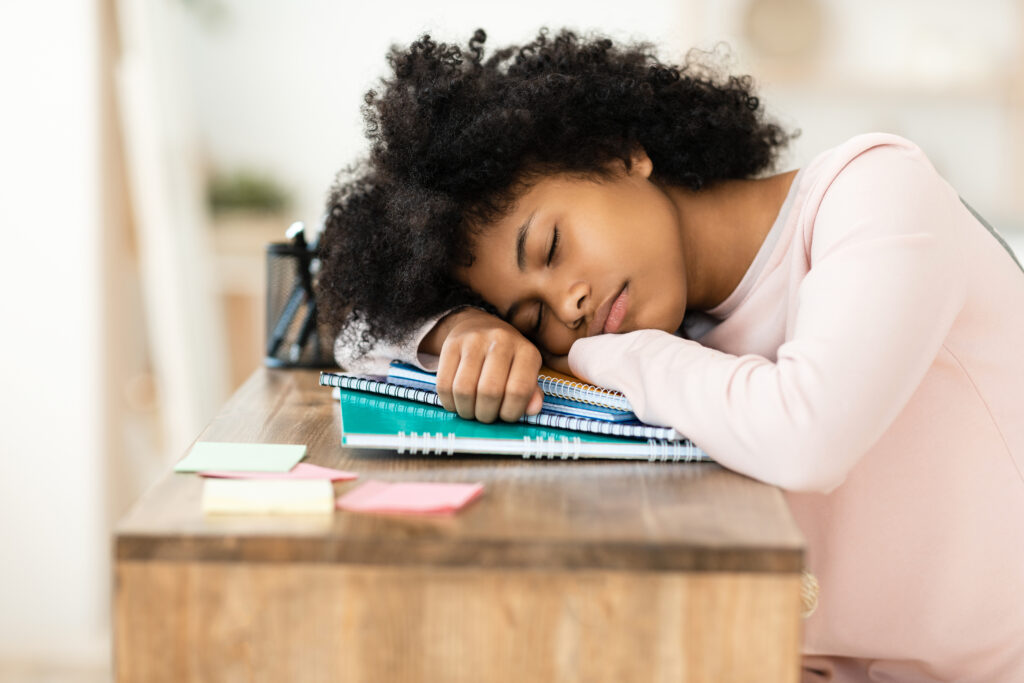
Pediatric Sleep Disorders
Pediatric sleep disorders are surprisingly common. Studies reported by American Family Physician show that up to 50% of children will experience a sleep problem at some point. However, if sleep disorders in kids are not identified early, other issues may arise, such as daytime drowsiness, irritability, behavioral problems, learning difficulties, motor vehicle accidents at the teenage level, and poor academic performance. The great news is that kids can often grow out of most sleep issues, and most pediatric sleep disorders are relatively easy to treat. Still, it’s important to be mindful of which sleep disorders in kids are most prevalent, what signs to look out for, and any pediatric sleep recommendations to help minimize the occurrence until they outgrow them.
Common Sleep Disorders in Kids
- Obstructive Sleep Apnea: Sleep apnea is a condition in which a person’s breathing halts in their sleep. While this is very common in adults, children can experience it all the same. Symptoms include snoring, daytime sleepiness, mouth breathing, difficulty focusing, and bedwetting. This condition often requires a sleep evaluation and specific treatment.
- Parasomnias: This is a disorder that causes abnormal behavior while sleeping, which can occur at any stage of the sleep cycle. Parasomnias is an especially common form of sleep disorders in kids. Milder cases might include sleep talking and confusional arousals, which are natural and more easily managed. More severe cases might include bedwetting, sleepwalking, night terrors, and nightmares, and may require professional attention or a sleep evaluation.
- Behavioral Insomnia: Insomnia is among the most common pediatric sleep disorders and is defined as an inability to fall and/or stay asleep. There is sleep onset association, which means that a child needs a parent’s assistance to fall asleep (i.e., rocking to sleep, feeding, reading, laying down alongside the child). Then, there is limit-setting, which means the child makes many demands after lights go out and refuses to rest until these are met. This can often be treated with simple lifestyle changes. However, if not corrected, further sleep evaluation may be necessary.
Pediatric Sleep Recommendations
- Obstructive Sleep Apnea: The condition can easily be diagnosed with a sleep study, and a treatment plan may include nighttime mouthpieces, CPAP therapy, medications, or removal of the tonsils and adenoids by adenotonsillectomy. Because children may not outgrow sleep apnea, it’s essential to contact a pediatrician and also a sleep physician to establish an evaluation and treatment plan.
- Parasomnias:
- Sleepwalking: Parents must put safety measures in place. Those who are sleepwalking are unaware of their surroundings and may injure themselves falling downstairs or wandering outside. Store any dangerous objects out of reach, and be sure to clear the floor before bedtime to eliminate tripping hazards. Additionally, try to keep your children on a regular schedule and stress levels low.
- Nightmares/Night Terrors: These are very common and often outgrown, so parents just need to be sure to keep their children safe and ensure they are getting enough sleep each night. Night terrors are incredibly difficult to wake up from, so you may notice your child tossing around, sitting upright, or crying out. These often occur 2-3 hours after falling asleep, so if you notice it happening at a specific time each night, try visiting your child’s room for scheduled awakenings. Softly speak their name until they adjust their position, and this is believed to disrupt the onset of terrors and help them subside.
- Bedwetting: This is very common and often outgrown by the age of seven. Simply making some lifestyle adjustments like limiting the child’s fluid intake before bed will typically resolve the issue. However, if you find bedwetting persists past seven years old, be sure to speak to your primary physician, who may recommend an alarm, scheduled bathroom visits, or sometimes medication.
- Behavioral Insomnia: By fulfilling excessive needs and requests from the child to avoid sleep, parents are encouraging “wake behaviors” rather than sleep. The simple solution is to put a plan in place to help the child learn to soothe themselves to sleep and be more independent. Encourage independent reading before bed. Make sure you develop a consistent routine with very few steps to make it easy for your child to begin sleeping on their own. Additionally, allow your child the opportunity to make any requests prior to bed, then try leaving bedtime tickets by their bedside. Once lights go out, children can only make requests using these tickets. Come morning time, any unused tickets will be rewarded. You may also consider completing a sleep study to determine appropriate treatment according to your child’s specific needs.
Treating Pediatric Sleep Disorders
Along with these pediatric sleep recommendations, simple management of all pediatric sleep disorders begins with good, consistent sleep hygiene, and a good sleep-wake schedule. Develop a regular routine for getting ready for bed and do your best to maintain consistent lights out and lights on schedules, even on the weekends, and reward for good sleep and behavior.
If you notice a significant decline in sleep quality, behavior, performance, or motivation resulting from any one of these pediatric sleep disorders, contact your pediatrician and a sleep specialist immediately for a comprehensive evaluation.
Schedule an appointment with a pediatric sleep specialist today!

